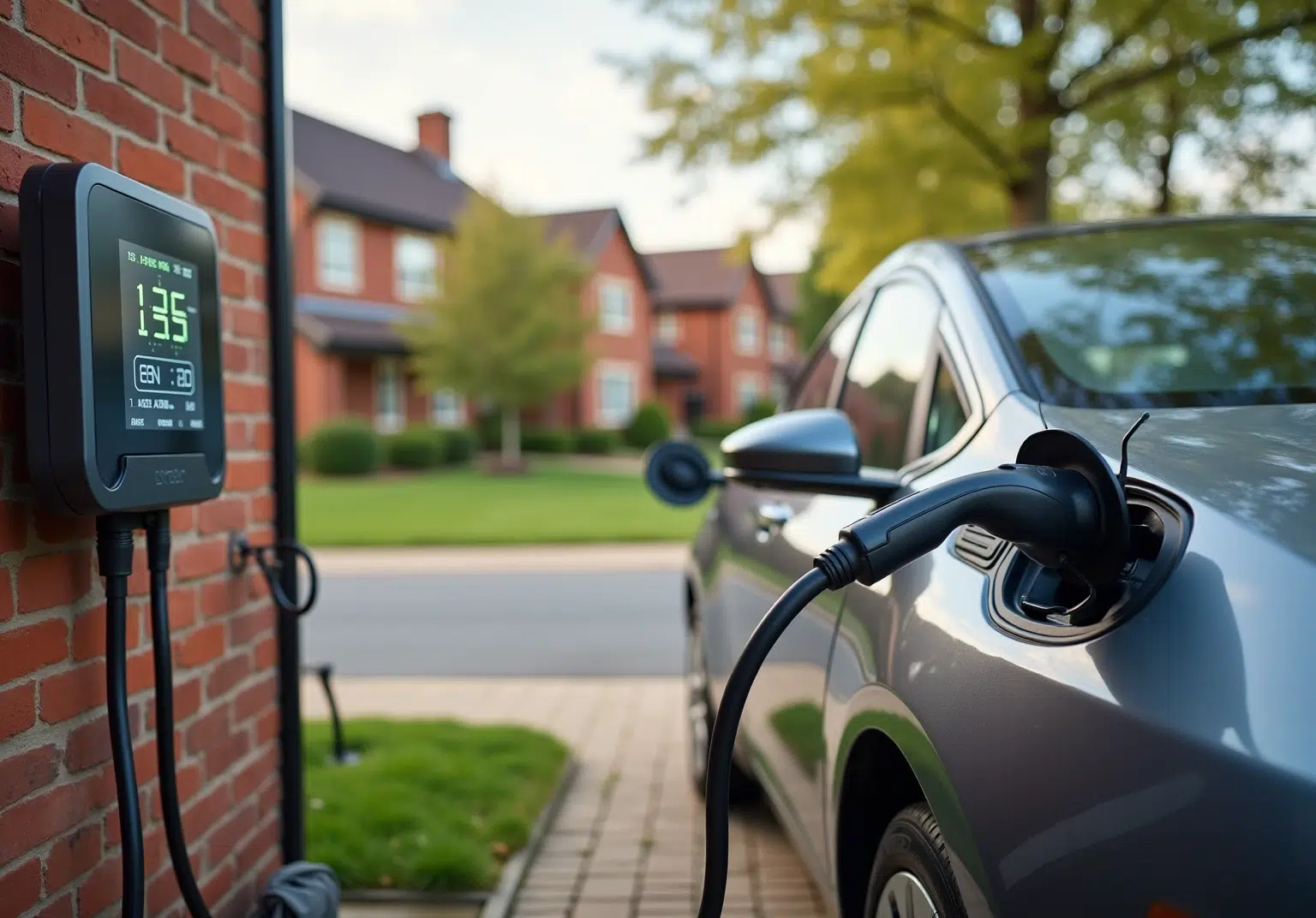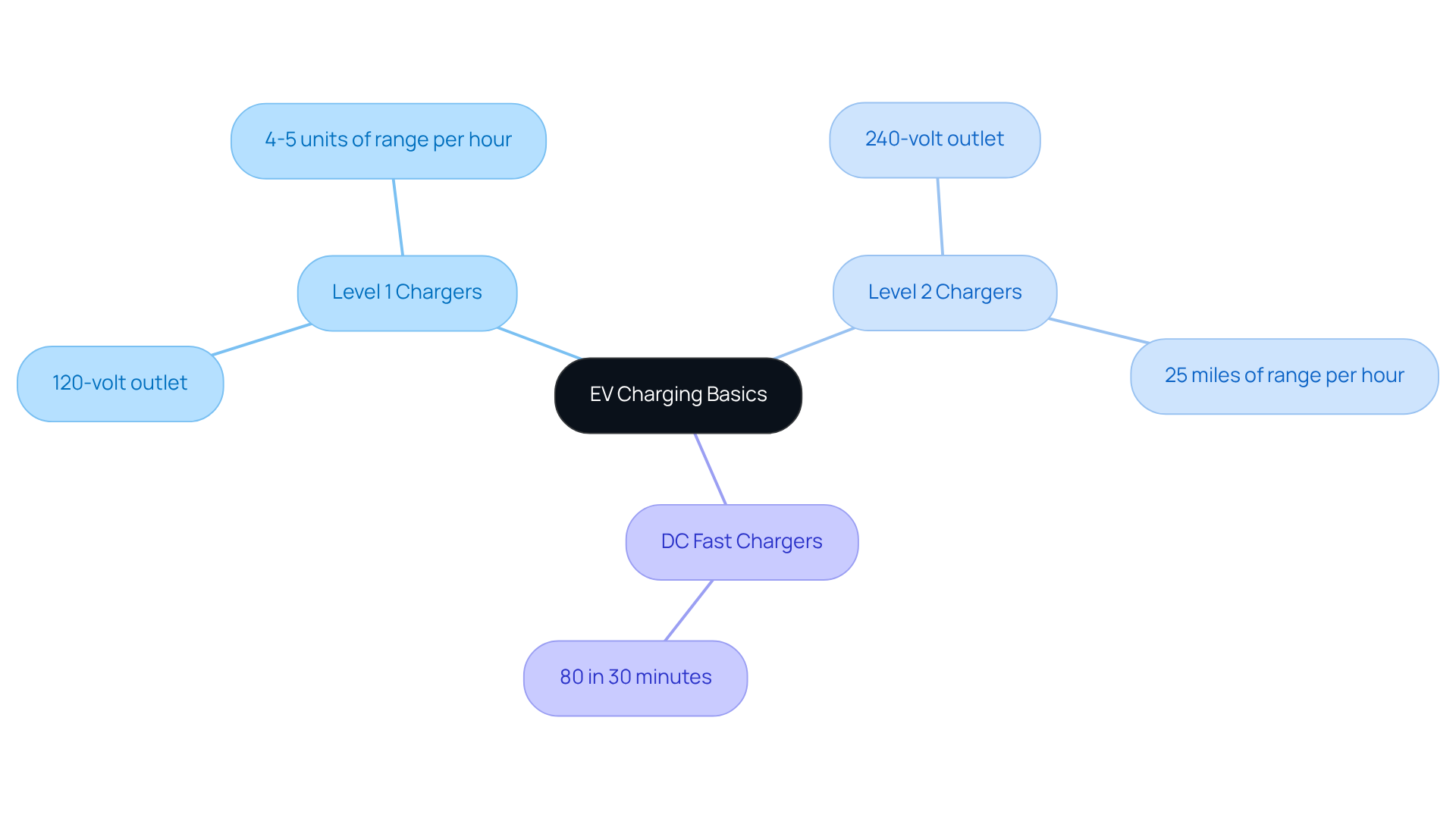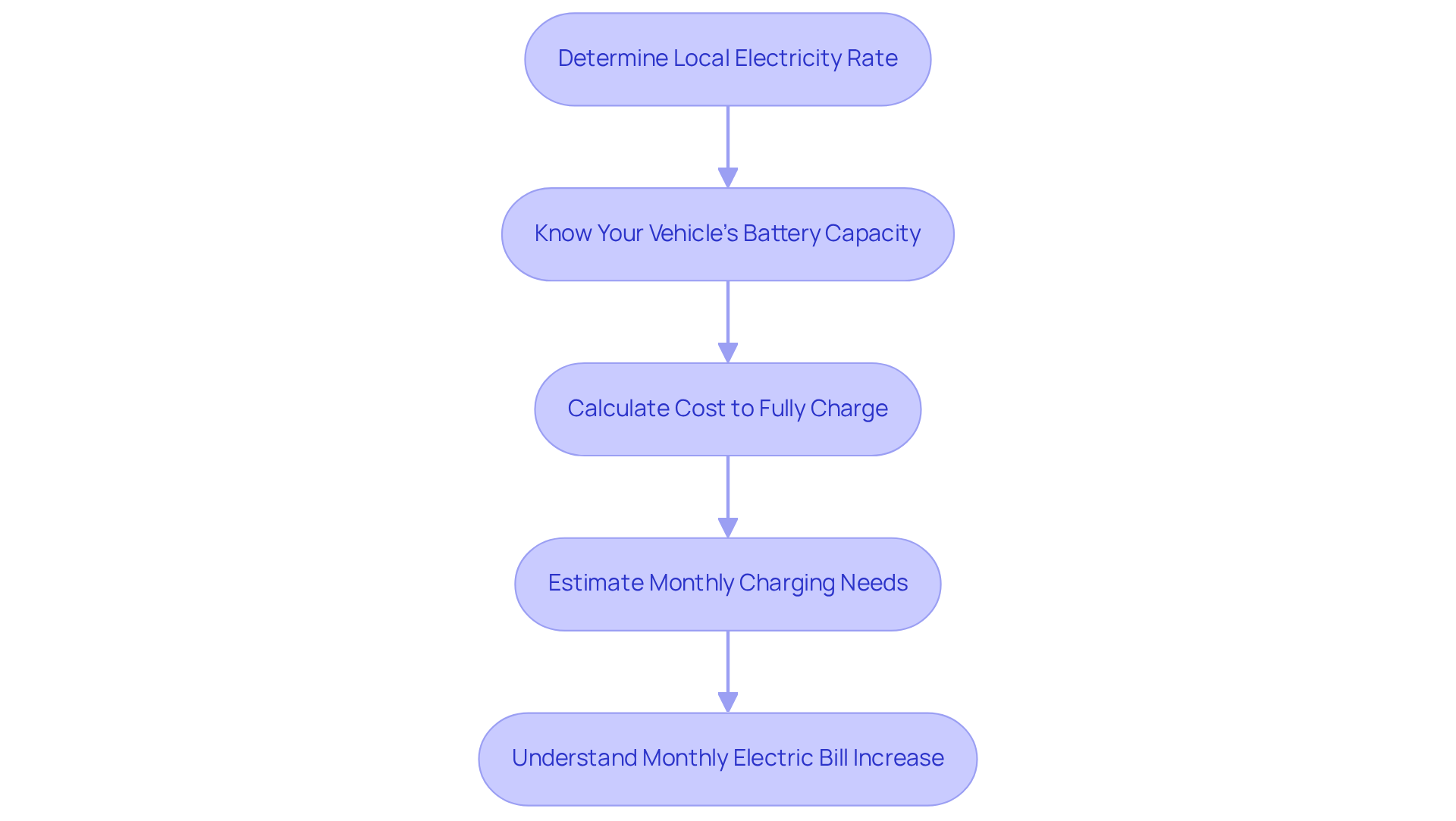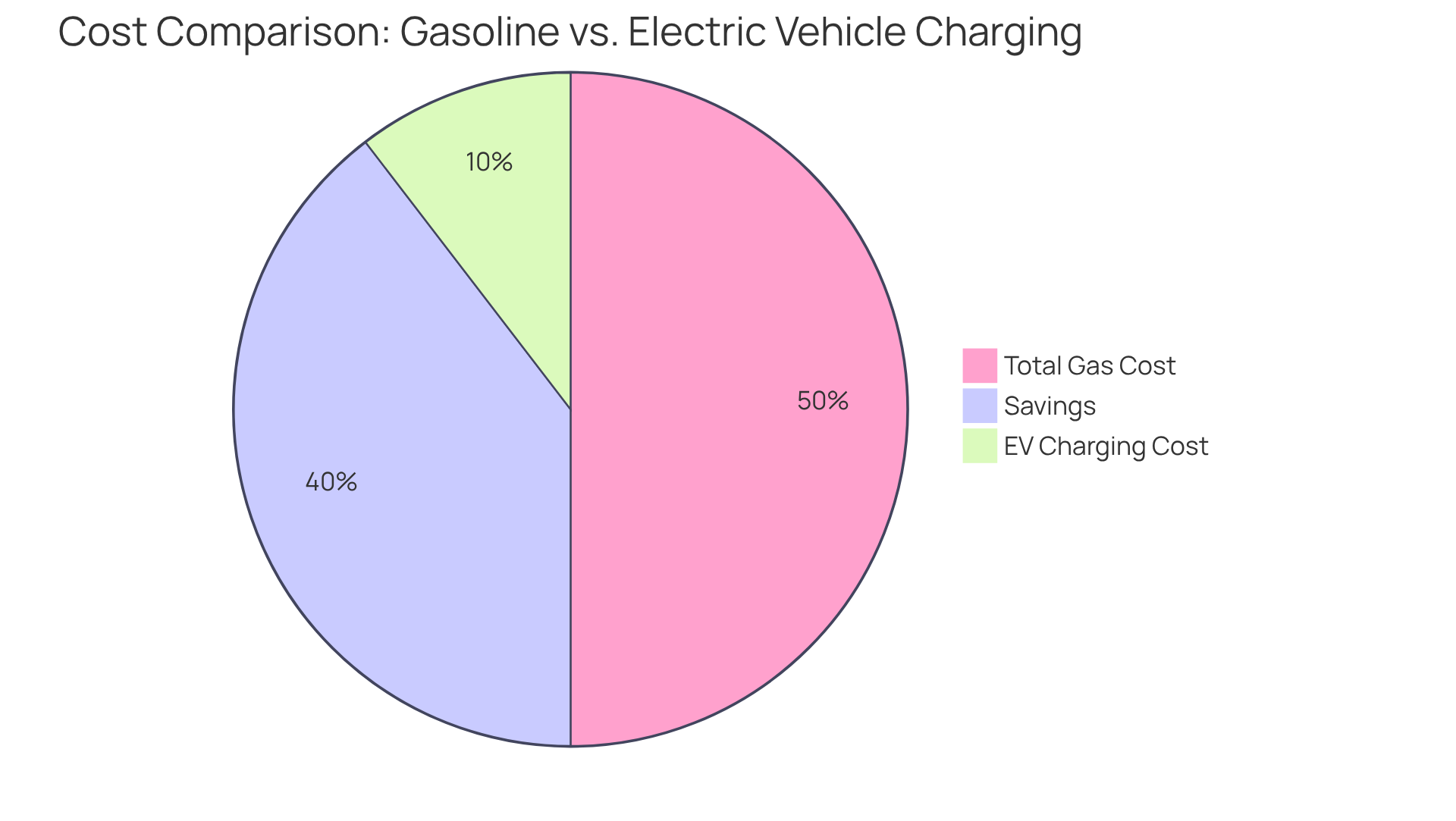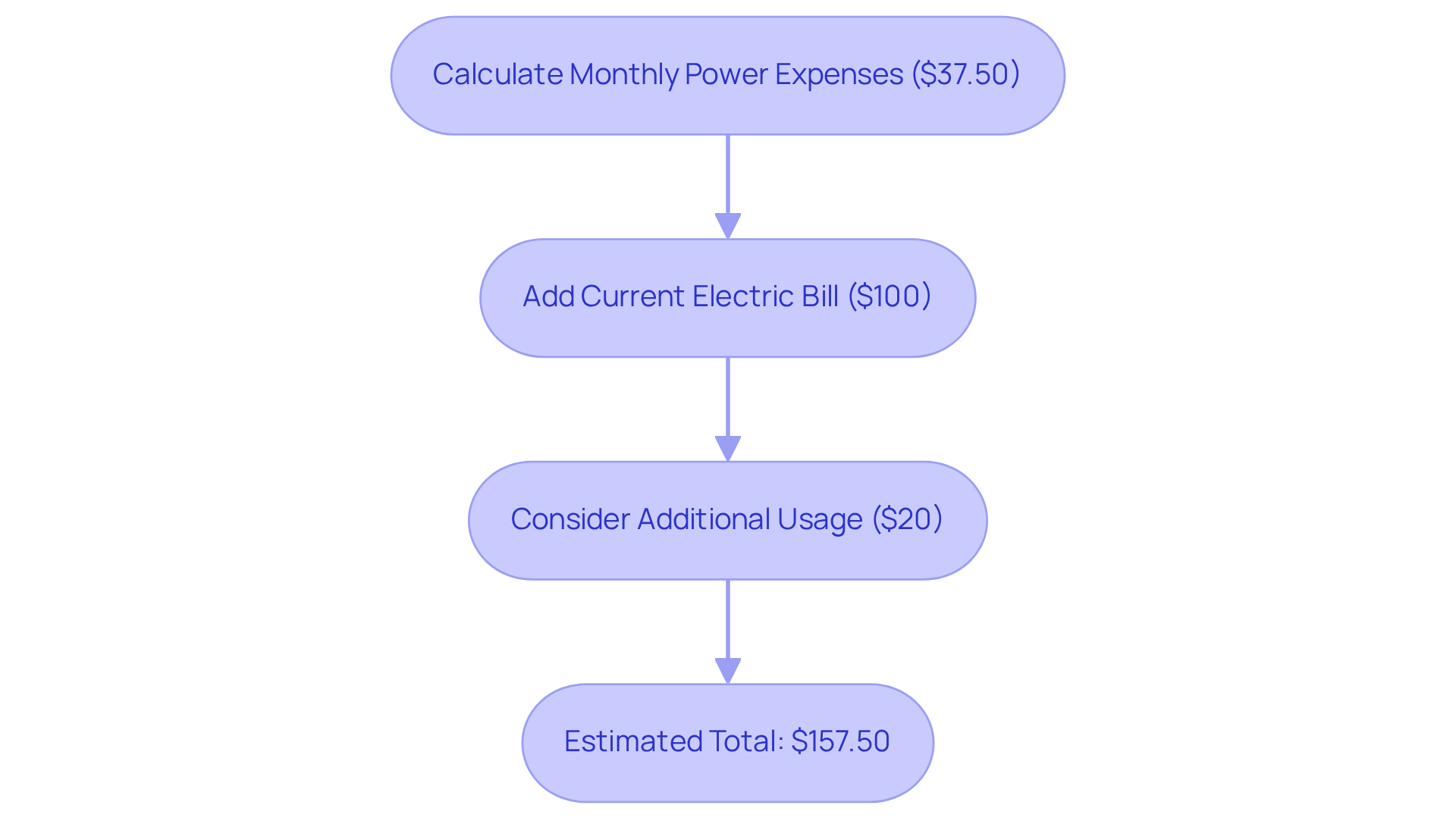Overview
We understand that rising electric bills can be a concern for many homeowners, especially when considering the cost of charging an electric vehicle like a Tesla. If you drive around 1,000 miles in a month, you might estimate an increase of about $37.50 on your electric bill for charging a Model 3. This figure takes into account local electricity rates, your driving habits, and the vehicle’s battery capacity and energy consumption. By considering these factors alongside your existing electric bill, you can gain a clearer picture of your total monthly costs.
It’s common to feel apprehensive about how these changes might affect your budget. However, embracing sustainable solutions can lead to greater energy independence and long-term savings. Together, we can explore ways to manage your energy consumption effectively. If you’re interested in learning more about how solar energy can help alleviate these concerns, please reach out. We’re here to support you on your journey towards a more sustainable lifestyle.
Introduction
Understanding the costs associated with electric vehicle ownership can feel overwhelming, especially when considering the transition to a Tesla. Many potential owners understandably wonder, “How much will my electric bill go up with a Tesla?” This article aims to address these concerns by exploring the intricacies of EV charging.
We will provide insights into different charger types, help you calculate charging costs, and compare these expenses to traditional gasoline vehicles. As worries about energy consumption and costs continue to grow, it’s common to feel uncertain about navigating these financial changes.
Together, we can explore how prospective Tesla owners can maximize their savings while embracing a more sustainable lifestyle.
Understand EV Charging Basics
We understand that navigating the world of electric vehicle refueling can feel overwhelming, particularly when trying to figure out how much will my electric bill go up with a tesla. Connecting your car to a power source to replenish its battery is essential, and there are three primary types of EV chargers to consider:
- Level 1 Chargers: Utilizing a standard 120-volt outlet, these chargers are the slowest option, typically providing around 4-5 units of range per hour. While they may take longer, they can be a simple and effective choice for many homeowners.
- Level 2 Chargers: Requiring a 240-volt outlet, Level 2 chargers offer a much faster charging experience, delivering about 25 miles of range per hour. Many eco-conscious homeowners choose these for their residential setups, often pairing them with energy-efficient appliances like smart power strips to enhance loading durations and lower expenses.
- DC Fast Chargers: Found at public stations, these high-powered devices can replenish a vehicle to 80% in approximately 30 minutes, making them a convenient option for those on the go.
By understanding these fundamentals, you can better assess how much energy you will need to charge your vehicle and determine how much will my electric bill go up with a tesla. It’s common to feel concerned about energy usage, but by incorporating energy-saving power strips and intelligent power solutions, you can further reduce your energy consumption while ensuring your electric vehicle is powered efficiently. Together, we can work towards a more sustainable future. For more detailed insights, we invite you to explore the “Understanding At Home Level 3 Chargers” tutorial, where you’ll find valuable information to support your journey.
Calculate Tesla Charging Costs per kWh
It is important to understand how much will my electric bill go up with a Tesla, especially as we all strive for more energy independence. Here’s a simple guide to help you calculate your charging costs, so you can feel confident about your choices.
-
Determine Your Local Electricity Rate: Start by checking your utility bill for the cost per kWh. For instance, if your rate is $0.15 per kWh, this will be your figure for calculations.
-
Know Your Electric Vehicle’s Battery Capacity: Different Tesla models come with varying battery capacities. For example, a Model 3 has a battery capacity of approximately 75 kWh, which is essential to know for your calculations.
-
Calculate the Cost to Fully Charge: To find out how much it costs to fully charge your vehicle, multiply your battery capacity by your electricity rate. So, for a Model 3:
- 75 kWh x $0.15 = $11.25 for a full charge. This gives you a clear picture of your charging expenses.
-
Estimate Monthly Charging Needs: If you drive around 1,000 miles a month and your Tesla consumes about 0.25 kWh per mile, you would need:
- 1,000 miles x 0.25 kWh/mile = 250 kWh.
- 250 kWh x $0.15 = $37.50 for the month. This estimate helps you plan your budget effectively.
By following these steps, you can better understand how much will my electric bill go up with a Tesla each month. It’s common to feel overwhelmed by energy costs, but with this knowledge, you can take control of your energy habits. Together, we can work towards a more sustainable future, and if you have any questions or need further assistance, don’t hesitate to reach out.
Compare EV Charging Costs to Gasoline
Are you feeling overwhelmed by rising energy costs? To help you navigate this concern, let’s take a closer look at how much will my electric bill go up with a Tesla in comparison to the costs associated with traditional gasoline.
- Average Cost of Gasoline: Currently, the average price of gasoline in California stands at around $4.50 per gallon.
- Fuel Efficiency of Gasoline Vehicles: A typical gasoline vehicle averages about 25 kilometers per gallon. Therefore, if you drive 1,000 miles, your costs would be:
- 1,000 miles / 25 mpg = 40 gallons.
- 40 gallons x $4.50 = $180.
- EV Charging Expenses: In contrast, powering an electric vehicle for the same distance (1,000 miles) would only cost you approximately $37.50.
- Savings: By transitioning to a Tesla, you could save:
- $180 (gas) – $37.50 (charging) = $142.50 per month.
This comparison clearly illustrates the cost-effectiveness of EVs over traditional gasoline vehicles. We understand that making the switch can feel daunting, but know that Powercore Electric is here to support you. Our EV refueling stations not only enhance your convenience but also contribute to your savings. By integrating solar energy solutions, you can further reduce your electric bills and address concerns about how much will my electric bill go up with a Tesla, making the shift to an electric vehicle not just an environmentally friendly choice but also an economically beneficial one.
Together, let’s explore how Powercore Electric can assist you in maximizing your savings with our comprehensive energy solutions. Your journey towards energy independence and sustainability starts here, and we are committed to guiding you every step of the way.
Estimate Your Increased Electric Bill
We understand that you might be worried about how much will my electric bill go up with a Tesla after you make your purchase. To help you navigate this change, let’s walk through a few simple steps together:
-
First, calculate your monthly power expenses. If you expect to spend around $37.50 on charging your vehicle each month, that’s a great starting point.
-
Next, consider your current electric bill. For example, if your bill is $100, adding the charging cost would look like this:
- $100 (current bill) + $37.50 (charging) = $137.50.
-
Now, think about any additional electricity usage you might anticipate for your household needs. It’s common to feel that you might use more, so consider factoring in an extra 10-20%. For instance, if we add $20 for additional usage, your calculations would be:
- $137.50 + $20 (additional usage) = $157.50.
Thus, it is estimated that how much my electric bill will go up with a Tesla could be around $157.50 per month. This figure can vary based on your driving habits and household energy consumption. Remember, together we can explore ways to manage these changes and even consider sustainable energy options that may help you achieve energy independence.
Conclusion
Understanding the financial implications of owning a Tesla, particularly regarding electric bill increases, is crucial for potential EV owners. We understand that concerns about rising bills can feel overwhelming. However, this guide has illuminated how charging an electric vehicle can be both manageable and cost-effective. With the right knowledge, you can alleviate those worries and embrace the transition to electric.
The article delved into the different types of EV chargers, emphasizing the efficiency of Level 2 chargers for home use and the rapid capabilities of DC Fast Chargers. It provided a straightforward method to calculate monthly charging costs based on local electricity rates and vehicle battery capacities. Moreover, a compelling comparison between EV charging expenses and traditional gasoline costs highlighted significant savings, reinforcing the economic advantages of transitioning to electric vehicles.
Ultimately, making the switch to a Tesla not only supports personal savings but also contributes to a broader movement towards sustainability. By taking proactive steps to understand charging costs and exploring energy-efficient solutions, individuals can confidently embrace electric vehicle ownership. As the world shifts towards greener alternatives, now is the time to consider the long-term benefits of EVs and how they can enhance both personal finances and environmental health. Together, we can work towards a more sustainable future, ensuring that your journey into electric vehicle ownership is both rewarding and empowering.


